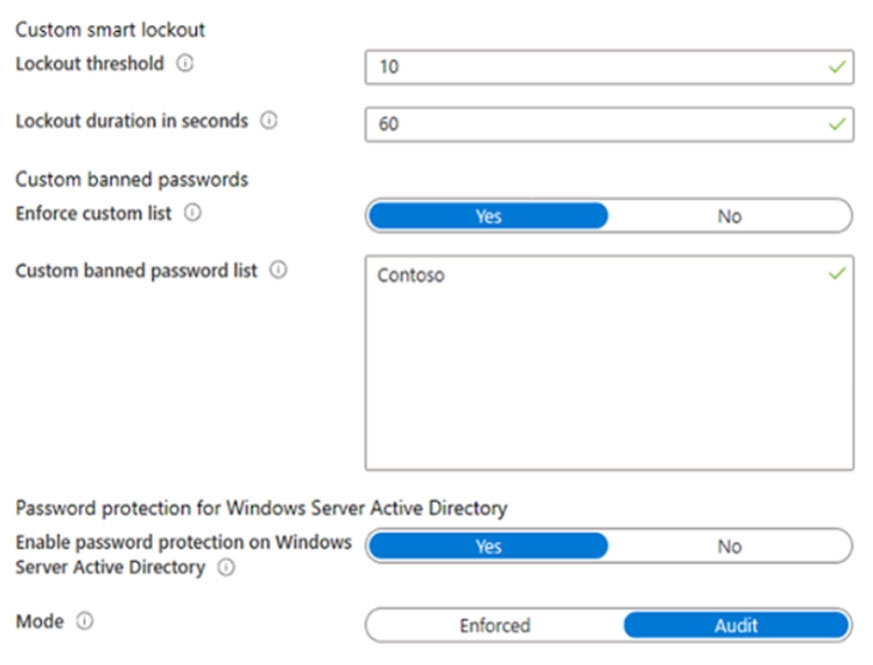

HOTSPOT -
Your company has a Microsoft 365 E5 subscription and a hybrid Azure Active Directory named contoso.com.
Contoso.com includes the following users:
You configure Password protection for Contoso.com as shown in the following exhibit.
For each of the following statements, select Yes if the statement is true. Otherwise, select No.
NOTE: Each correct selection is worth one point.
Hot Area:

dakasa
Highly Voted 2 years, 10 months agoMaartenC
2 years, 10 months agoMaartenC
2 years, 10 months agoEzeQ
2 years, 9 months agoJust2a
2 years, 8 months agomsysadmin
2 years, 4 months agoBroesweelies
Highly Voted 2 years, 9 months agoEM1234
2 years, 4 months agoEM1234
2 years, 4 months agoRomanV
Most Recent 2 years agoTrivediVivek78
2 years, 3 months agolcaothu92
2 years, 3 months agoJoeP1
2 years, 4 months agoyeti2390
2 years, 4 months agorick001
2 years, 5 months agozerrowall
2 years, 6 months agoskycrap
2 years, 6 months agoWedge34
2 years, 8 months agoAcbrownit
2 years, 8 months agoMrDribble
2 years, 9 months agoTanasi
2 years, 4 months agoxyz213
2 years, 9 months agoxyz213
2 years, 9 months agoxyz213
2 years, 9 months agoashkins
2 years, 9 months agoTrainee2244
2 years, 10 months ago